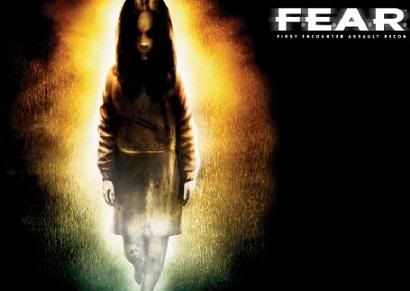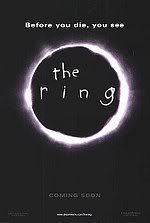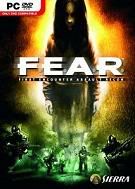F.E.A.R.

Might as well get it out of the way. F.E.A.R. is the best first-person shooter I have played since Half-Life 2. And you know what? It may just even be better.
Developed by Monolith Productions, who also developed other well known first-person shooters such as the Blood series, Shogo: Mobile Armored Division, and TRON 2.0, F.E.A.R., which stands for First Encounter Assault Recon, boasts state-of-the-art graphics and sound, astounding gameplay, a compelling storyline, and the right amount of thrills and scares.
In it you play an unnamed F.E.A.R. operative given the mission of hunting down a telepathic commander by the name of Paxton Fettel who has escaped custody. Under his control are a battalion of clone soldiers determined to stop you at all cost. But if you think this game is nothing but your run-of-the-mill run and gun shooter, you are sadly mistaken. What makes this game unique among other first-person shooters is the use of certain elements from movies such as The Ring or The Grudge which lends the story a touch of the paranormal and provides moments of sheer terror that would literally make you jump back with fright. Truth be told, such elements have become staples in the movie world, but among first-person shooters, this is the first game to make use of such plot devices. In F.E.A.R., you will encounter visions of a mysterious little girl throughout the duration of the game. The connection between the apparitions/hallucinations and the story will be revealed by the end of the game, and the desire to learn how the story turns out can be a very powerful inducement to complete the game. The twist at the end can be compared to something perhaps written by M. Night Shyamalan. Of course, I'm not telling you what it is. You have to find out for yourself.
What makes this game unique among other first-person shooters is the use of certain elements from movies such as The Ring or The Grudge which lends the story a touch of the paranormal and provides moments of sheer terror that would literally make you jump back with fright. Truth be told, such elements have become staples in the movie world, but among first-person shooters, this is the first game to make use of such plot devices. In F.E.A.R., you will encounter visions of a mysterious little girl throughout the duration of the game. The connection between the apparitions/hallucinations and the story will be revealed by the end of the game, and the desire to learn how the story turns out can be a very powerful inducement to complete the game. The twist at the end can be compared to something perhaps written by M. Night Shyamalan. Of course, I'm not telling you what it is. You have to find out for yourself.
As far as gameplay is concerned, it plays pretty much like any standard first-person shooter, though there are certain differences which set this game apart from others in the same genre. One is the use of SlowMo in which the entire game world slows down in order to simulate the main characters' enhanced reflexes. It is somewhat similar to the bullet time trick used in the Max Payne series, only rendered in the first-person point of view. Second is an enhanced melee mode. While other first-person shooters allow you to use your drawn weapon to bash enemies, F.E.A.R. goes one further by also allowing you to holster your drawn weapon, and by pressing a combination of buttons to make intricate martial arts moves.
F.E.A.R. also features what is perhaps the most sophisticated AI in a first person shooter. Enemy movements are highly coordinated, truly simulating the efficiency of highly trained soldiers. They seek cover when under fire, use grenades, and talk to each other via radio (which you can hear). A single enemy soldier spotting you (or even the glare of your flashlight) can alert other enemy soldiers of your presence. If you stand still they will flank you, and if you wipe out the majority of members in a squad you will hear remaining members call out for reinforcements. Suffice it to say that the enemy AI is one of the best I've ever seen.
As far as eye candy is concerned, F.E.A.R. uses the Lithtech: Jupiter EX graphics engine and provides some of the best game visuals in recent memory, easily a match for such other notable games such as Doom 3 (using the graphics engine of the same name) and Half-Life 2 (which uses the Source engine). Indeed, the Lithtech: Jupiter EX engine seems to combine the best traits of the Doom 3 and Source engines, the lighting and shadowing prowess of the former and the enhanced real world physics of the latter. The results are incredibly realistic surface texturing, particularly on walls, lighting and shadowing, which strongly mimic how light actually behaves, and physics which dramatically portray interactivity with various real world objects. Of course, you'll need a fairly new computer to generate all this, at least a 1.7 GHz CPU, 512 MB of RAM, and a GeForce 4 Ti or Radeon 9000. I got through the game pretty well (very good framerates) with a somewhat antiquated Athlon XP 2400+ with a GeForce 6800LE and 1.5 GB of RAM. And then there's the sound. I've had a Sound Blaster Audigy (an original Audigy 1, the inexpensive Digital Entertainment Special Edition variant) in my computer hooked up to 5.1 speakers for at least three years now, and this is the first game that I've played that actually makes the most of my audio setup without any issues whatsoever. It exploits my sound card's ability to run the EAX Advanced HD standard, which provides awesome sound effects and highly realistic 3D positioning. EAX support on other games isn't as transparent as it is in this game, case in point is the very annoying stuttering in Half-Life 2 or the significant performance hit or the occassional freeze (at least in my case) when enabling EAX in Battlefield 2. In F.E.A.R., the sound is so good that you feel totally immersed in the environment you're in. The sound is just that realistic. And I'm just using a plain vanilla Audigy sound card. I wonder how much better the game would sound if I were using a Sound Blaster X-Fi, which is the recommended sound card for F.E.A.R..
And then there's the sound. I've had a Sound Blaster Audigy (an original Audigy 1, the inexpensive Digital Entertainment Special Edition variant) in my computer hooked up to 5.1 speakers for at least three years now, and this is the first game that I've played that actually makes the most of my audio setup without any issues whatsoever. It exploits my sound card's ability to run the EAX Advanced HD standard, which provides awesome sound effects and highly realistic 3D positioning. EAX support on other games isn't as transparent as it is in this game, case in point is the very annoying stuttering in Half-Life 2 or the significant performance hit or the occassional freeze (at least in my case) when enabling EAX in Battlefield 2. In F.E.A.R., the sound is so good that you feel totally immersed in the environment you're in. The sound is just that realistic. And I'm just using a plain vanilla Audigy sound card. I wonder how much better the game would sound if I were using a Sound Blaster X-Fi, which is the recommended sound card for F.E.A.R.. I guess by now you have gotten that point. F.E.A.R. is just that good. If you're into first-person shooters, you can't let this game slip by.
I guess by now you have gotten that point. F.E.A.R. is just that good. If you're into first-person shooters, you can't let this game slip by.
It was rated "Editor's Choice" by reknowned gaming web sites and publications such as GameSpy, GameSpot, and PC Gamer. It was also awarded "Best Story" in GameSpy's 2005 Game of the Year awards, and "Best Graphics" and "Best Technology" at the 2006 Imagina Game Awards. And it deserves each and every one of those accolades. You just have to play it to believe it.
And when you do play it, you're in for the scare of your life. Don't say I didn't warn you.
Comments